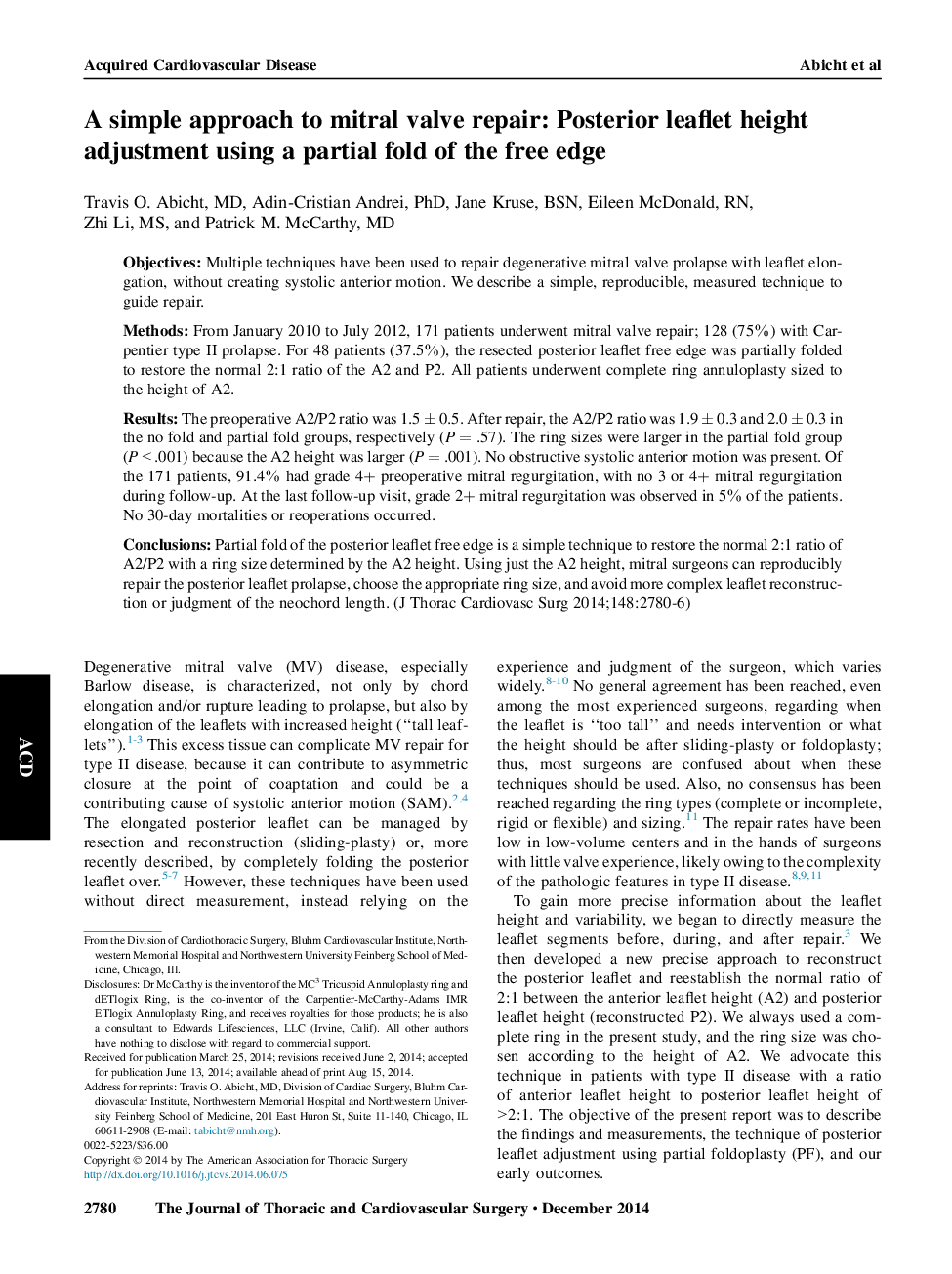| Article ID | Journal | Published Year | Pages | File Type |
|---|---|---|---|---|
| 5989863 | The Journal of Thoracic and Cardiovascular Surgery | 2014 | 7 Pages |
ObjectivesMultiple techniques have been used to repair degenerative mitral valve prolapse with leaflet elongation, without creating systolic anterior motion. We describe a simple, reproducible, measured technique to guide repair.MethodsFrom January 2010 to July 2012, 171 patients underwent mitral valve repair; 128 (75%) with Carpentier type II prolapse. For 48 patients (37.5%), the resected posterior leaflet free edge was partially folded to restore the normal 2:1 ratio of the A2 and P2. All patients underwent complete ring annuloplasty sized to the height of A2.ResultsThe preoperative A2/P2 ratio was 1.5 ± 0.5. After repair, the A2/P2 ratio was 1.9 ± 0.3 and 2.0 ± 0.3 in the no fold and partial fold groups, respectively (P = .57). The ring sizes were larger in the partial fold group (P < .001) because the A2 height was larger (P = .001). No obstructive systolic anterior motion was present. Of the 171 patients, 91.4% had grade 4+ preoperative mitral regurgitation, with no 3 or 4+ mitral regurgitation during follow-up. At the last follow-up visit, grade 2+ mitral regurgitation was observed in 5% of the patients. No 30-day mortalities or reoperations occurred.ConclusionsPartial fold of the posterior leaflet free edge is a simple technique to restore the normal 2:1 ratio of A2/P2 with a ring size determined by the A2 height. Using just the A2 height, mitral surgeons can reproducibly repair the posterior leaflet prolapse, choose the appropriate ring size, and avoid more complex leaflet reconstruction or judgment of the neochord length.
